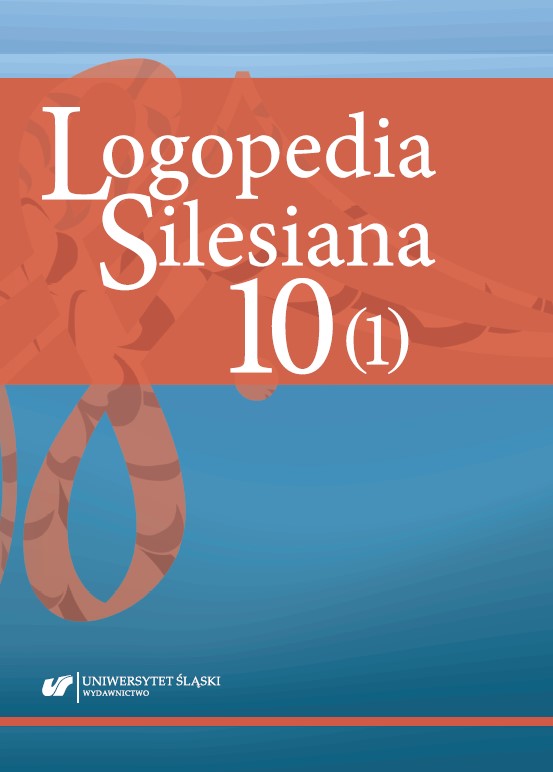Borzucka-Sitkiewicz, K., & Leksy, K. (2017). Ekshibicjonizm społeczny w Internecie. Motywy i potencjalne zagrożenia dla zdrowia i bezpieczeństwa młodzieży. Katowice: Wydawnictwo Uniwersytetu Śląskiego.
Google Scholar
Coraz więcej rozmawiamy przez telefon (2020, 20 May). Bankier.pl. https://www.bankier.pl/wiadomosc/Coraz-wiecej-rozmawiamy-przez-telefon-7887546.html [access: 6.02.2021].
Google Scholar
Dziadzia, B. (2008). Wpływ mediów. Konteksty społeczno-edukacyjne. Kraków: Impuls.
Google Scholar
Edukacja medialna wyzwaniem XXI wieku (2008). Edukacja Medialna. http://www.edukacjamedialna.pl/news.php?extend.136.1 [access: 16.02.2021].
Google Scholar
Farber, B.A., Shafron, G., Hamadani, J., Wald, E., & Nitzburg, G. (2012). Children, technology, problems, and preferences. Journal of Clinical Psychology, 68(11), 1226–1229. https://doi.org/10.1002/jclp.21922.
Google Scholar
Goban-Klas, T. (2011). Wartki nurt mediów. Ku nowym formom społecznego życia informacji. Kraków: Universitas.
Google Scholar
Grinberg, E. (2017). Cyberprzestrzeń – aspekt społeczny tworzenia się więzi oraz wynikających z tego problemów społecznych. In: M. Górka. (ed.), Cyberbezpieczeństwo dzieci i młodzieży. Realny i wirtualny problem polityki bezpieczeństwa (pp. 71–87). Warszawa: Difin.
Google Scholar
Hołyst, B. (2013). Zagrożenia ładu społecznego (vol. 1). Warszawa: Wydawnictwo Naukowe PWN.
Google Scholar
Hołyst, B. (2014). Zagrożenia ładu społecznego (vol. 2). Warszawa: Wydawnictwo Naukowe PWN.
Google Scholar
Internet Live Stats. https://www.internetlivestats.com [access: 10.02.2021].
Google Scholar
Jakubowski, W. (2011). Media, tożsamość i edukacja. In: S. Jaskulska & W. Jakubowski (eds.), Kultura mediów, ciało i tożsamość. Konteksty socjalizacyjne i edukacyjne (pp. 15–32). Kraków: Impuls.
Google Scholar
Juszczyk, S. (2011). Internet – współczesne medium komunikacji społecznej. Edukacja i Dialog, 5–6, 42–46.
Google Scholar
Kaufman, G., & Flanagan, M. (2016): High-low split: divergent cognitive construal levels triggered by digital and non-digital platforms. In: CHI ’16: Proceedings of the 2016 CHI Conference on Human Factors in Computing Systems (pp. 2773–2777). New York: Association for Computing Machinery. https://doi.org/10.1145/2858036.2858550.
Google Scholar
Livingstone, S., & Haddon, L. (2009a): EU Kids Online: Final report. London: The London School of Economics and Political Science, EU Kids Online. https://www.researchgate.net/publication/313012759_EU_Kids_Online_final_report_2009/link/588c9a86aca272fa50df225f/download [access: 22.01.2021].
Google Scholar
Livingstone, S., & Haddon, L. (2009b). Introduction. In: S. Livingstone & L. Haddon (eds.), Kids online: opportunities and risks for children (pp. 1–6). Bristol: The Policy Press.
Google Scholar
Martens, A. (2012). Formy i normy – język komunikacji internetowej, rozważania wstępne. Kwartalnik Internetowy „Komunikacja Społeczna”, 2, 20–28. https://socialcommunication.edu.pl/wp-content/uploads/2016/02/114-KOMUNIKACJA-SPO%C5%81ECZNA-nr-2-2012.pdf [access: 27.04.2021].
Google Scholar
McQuail, D. (2007). Teoria komunikowania masowego. Transl. M. Bucholc & A. Szulżycka. (eds). T. Goban-Klas. Warszawa, Wydawnictwo Naukowe PWN.
Google Scholar
Molęda-Zdziech, M. (2014). „Nowe nowe media” według Paula Levinsona – kreatywna nazwa czy innowacyjna koncepcja? In: A. Zorska, M. Molęda-Zdziech & B. Jung (eds.), Kreatywność i innowacyjność w erze cyfrowej. Twórcza destrukcja 2 (pp. 101–121). Warszawa: Oficyna Wydawnicza Szkoły Głównej Handlowej.
Google Scholar
Pierce, T. (2009). Social anxiety and technology: Face-to-face communication versus technological communication among teen. Computers in Human Behavior, 25, 1367–1372. https://doi.org/10.1016/j.chb.2009.06.003.
Google Scholar
Taras, B. (2004). Anonim w Internecie, czyli o komunikacji incognito. In: M. Kita & J. Grzenia (eds.), Dialog a nowe media (pp. 42–51). Katowice: Wydawnictwo Uniwersytetu Śląskiego.
Google Scholar
Warzecha, K. (2018). Technologie informacyjno-komunikacyjne wykorzystywane przez młodzież – szanse i zagrożenia. Zeszyty Naukowe Uniwersytetu Ekonomicznego w Katowicach, 350, 115–136.
Google Scholar
We are social – global digital report 2020 (2020). https://wearesocial.com/digital-2020 [access: 8.01.2021].
Google Scholar
Zapędowski, P. (2014). Funkcjonowanie człowieka w cyberprzestrzeni – świat wirtualny w realiach second life. In: J. Bednarek (eds.), Człowiek w obliczu szans cyberprzestrzeni i świata wirtualnego (pp. 151–160). Warszawa: D
Google Scholar


 https://doi.org/10.31261/LOGOPEDIASILESIANA.2021.10.01.06
https://doi.org/10.31261/LOGOPEDIASILESIANA.2021.10.01.06

 10.31261/LOGOPEDIASILESIANA
10.31261/LOGOPEDIASILESIANA